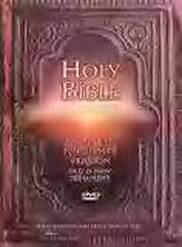Acts 19:23-41
Lesson 266
Read both the "King James Bible" and the "New Living Translation."
In this lesson:
The great silversmith riot!
Demetrius stirs up a riot.
By British artist Edward Henry Corbould (1815-1905).
By British artist Edward Henry Corbould (1815-1905).
Who was -
Diana -
Diana is the Roman name for Artemis, the Greek goddess of fertility (also called the goddess of the wilderness or the goddess of the hunt and wild animals). Pagans believed Diana was the daughter of Zeus and Leto and the twin sister of Apollo. Spartans offered sacrifices to her before going into battle. From Asia Minor to Spain, pagan temples were built to honor her, but the most prestigious temple was just outside the city walls of Ephesus. The temple was considered one of the seven wonders of the ancient world. It was made of Parian marble with gold inlay and took over two hundred years to build. The temple was 425 feet long, 220 feet wide, 60 feet high, with 127 gold plated marble columns holding up the roof, each column standing 56 feet tall. It was filled with great works of art and housed an image of Diana carved from rock said to have fallen from the heavens (19:35). The temple attracted tourists and worshippers from throughout the Roman empire, especially each May 25th when a parade and festival that included wild orgies were held in Diana's honor. No doubt the trinket and souvenir sales were very profitable. The temple stood until AD 262, until the Goths destroyed it.
Gaius -
A Macedonian (Greek) baptized by Paul (1 Corinthians 1:14). Paul was staying in Gaius' home in Corinth when he wrote "The Epistle of Paul the Apostle to the Romans" (Romans 16:23). Gaius traveled with Paul to Asia on the third missionary journey (Acts 20:4-6). We see in this passage; an angry mob attacked Gaius in Ephesus (Acts 19:29).
Aristarchus -
A Macedonian (Acts 19:29) from Thessalonica (Acts 20:4) who befriended Paul and worked along side him (Philemon 1:24). A Jewish convert, Aristarchus traveled with Paul on the third missionary journey (Acts 27:1-2) and was caught by the mob during the silversmith riot in Ephesus. He sailed to Rome with Paul (Acts 27:1-2), and they were imprisoned there together (Colossians 4:10). It is uncertain how Aristarchus died, but some historians believe he was killed for his faith during the reign of Nero.
Diana -
Diana is the Roman name for Artemis, the Greek goddess of fertility (also called the goddess of the wilderness or the goddess of the hunt and wild animals). Pagans believed Diana was the daughter of Zeus and Leto and the twin sister of Apollo. Spartans offered sacrifices to her before going into battle. From Asia Minor to Spain, pagan temples were built to honor her, but the most prestigious temple was just outside the city walls of Ephesus. The temple was considered one of the seven wonders of the ancient world. It was made of Parian marble with gold inlay and took over two hundred years to build. The temple was 425 feet long, 220 feet wide, 60 feet high, with 127 gold plated marble columns holding up the roof, each column standing 56 feet tall. It was filled with great works of art and housed an image of Diana carved from rock said to have fallen from the heavens (19:35). The temple attracted tourists and worshippers from throughout the Roman empire, especially each May 25th when a parade and festival that included wild orgies were held in Diana's honor. No doubt the trinket and souvenir sales were very profitable. The temple stood until AD 262, until the Goths destroyed it.
Gaius -
A Macedonian (Greek) baptized by Paul (1 Corinthians 1:14). Paul was staying in Gaius' home in Corinth when he wrote "The Epistle of Paul the Apostle to the Romans" (Romans 16:23). Gaius traveled with Paul to Asia on the third missionary journey (Acts 20:4-6). We see in this passage; an angry mob attacked Gaius in Ephesus (Acts 19:29).
Aristarchus -
A Macedonian (Acts 19:29) from Thessalonica (Acts 20:4) who befriended Paul and worked along side him (Philemon 1:24). A Jewish convert, Aristarchus traveled with Paul on the third missionary journey (Acts 27:1-2) and was caught by the mob during the silversmith riot in Ephesus. He sailed to Rome with Paul (Acts 27:1-2), and they were imprisoned there together (Colossians 4:10). It is uncertain how Aristarchus died, but some historians believe he was killed for his faith during the reign of Nero.
Study Tip:
Don't forget to read the Margin Notes in blue and to click on the links.
Don't forget to read the Margin Notes in blue and to click on the links.




